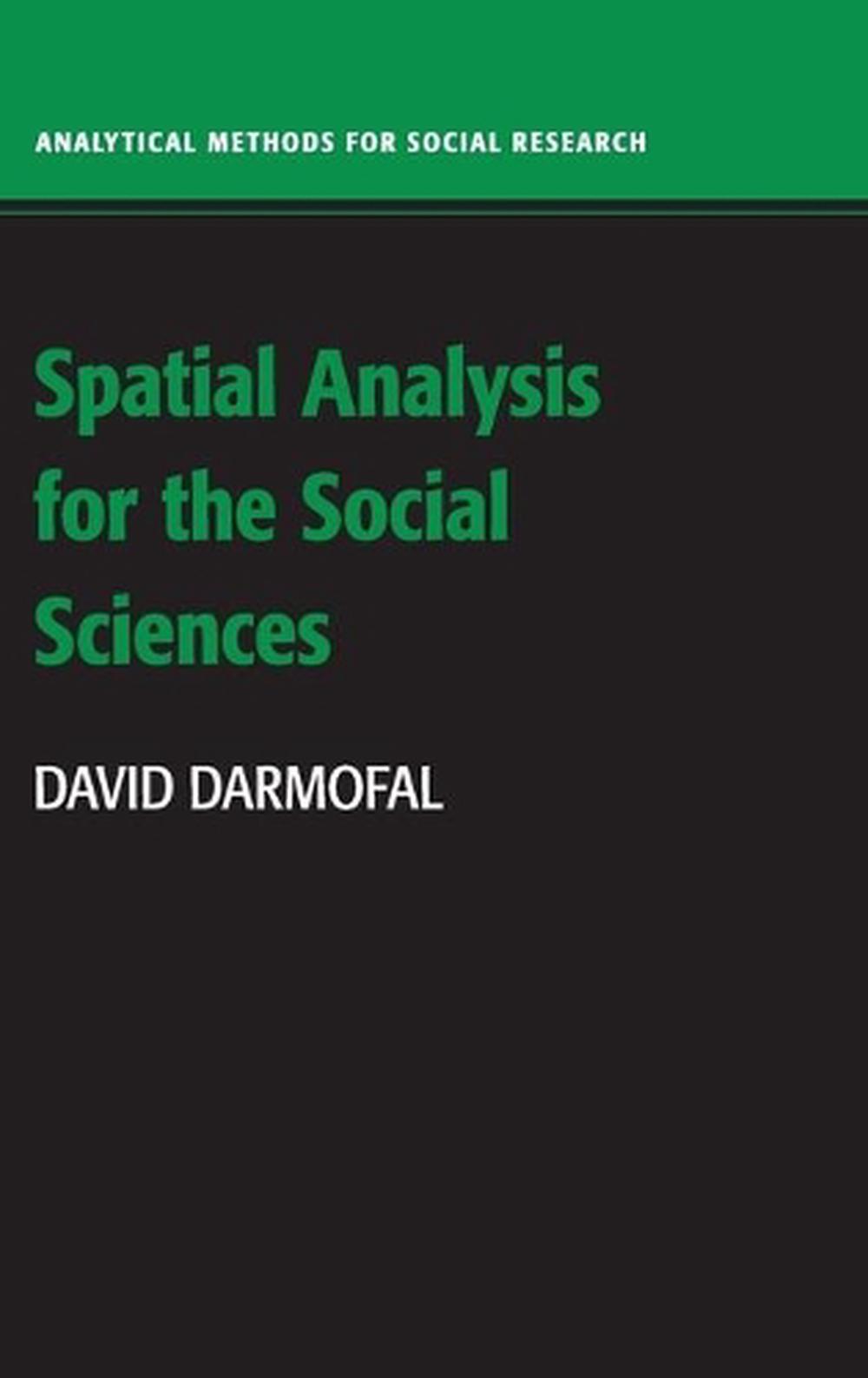
When you click on links to various merchants on this site and make a purchase, this can result in this site earning a commission. Affiliate programs and affiliations include, but are not limited to, the eBay Partner Network.
Spatial Analysis for the Social Sciences by David Darmofal (English) Hardcover B

- Item No : 236112334627
- Condition : Brand New
- Brand : No brand Info
- Seller : the_nile_uk_store
- Current Bid : US $132.78
-
* Item Description
-
The Nile on eBay

Spatial Analysis for the Social Sciences
by David Darmofal
Spatial Analysis for the Social Sciences is for researchers across the social sciences who want to model and explain spatial interactions between the actors they study. The book is very user-friendly and demonstrates a variety of analytical approaches that applied researchers can use in their work.
FORMAT
HardcoverLANGUAGE
EnglishCONDITION
Brand New
Publisher Description
Many theories in the social sciences predict spatial dependence or the similarity of behaviors at neighboring locations. Spatial Analysis for the Social Sciences demonstrates how researchers can diagnose and model this spatial dependence and draw more valid inferences as a result. The book is structured around the well-known Galton's problem and presents a step-by-step guide to the application of spatial analysis. The book examines a variety of spatial diagnostics and models through a series of applied examples drawn from the social sciences. These include spatial lag models that capture behavioral diffusion between actors, spatial error models that account for spatial dependence in errors, and models that incorporate spatial heterogeneity in the effects of covariates. Spatial Analysis for the Social Sciences also examines advanced spatial models for time-series cross-sectional data, categorical and limited dependent variables, count data, and survival data.
Table of Contents
Part I. General Topics: 1. The social sciences and spatial analysis; 2. Defining neighbors via a spatial weights matrix; 3. Spatial autocorrelation and statistical inference; 4. Diagnosing spatial dependence; 5. Diagnosing spatial dependence in the presence of covariates; 6. Spatial lag and spatial error models; 7. Spatial heterogeneity; Part II. Advanced Topics: 8. Time-series-cross-section (TSCS) and panel data models; 9. Advanced spatial models; 10. Conclusion; Part III. Appendices on Implementing Spatial Analyses: 11. Getting data ready for a spatial analysis; 12. Spatial software; 13. Web resources for spatial analysis; 14. Glossary.
Review
'Do you collect all your data from just one place? Would the geography of what your research covers look like a single dot on a map? If so, then don't read David Darmofal's interesting and accessible book on spatial statistics. And definitely skip the practical discussion of software that shows you how to improve your statistical analyses to account for geographic dependencies.' Gary King, Albert J. Weatherhead III University Professor, and Director, Institute for Quantitative Social Science, Harvard University, Massachusetts
'Spatial Analysis for the Social Sciences is an accessible 'must-read' so that scholars learn to recognize the dependencies in their data, how to test for these dependencies, and how to address them. Darmofal is convincing in his conclusion that all social science data are indeed spatial data.' Janet M. Box-Steffensmeier, Vernal Riffe Professor of Political Science, Ohio State University
'In this detailed, thoughtful book, David Darmofal teaches us how to model data driven by geography, whether cholera outbreaks or presidential votes. This book maps out strategies to define spatial data and draw inferences. His work is thorough, his treatment of the subject is masterful, and students across the social sciences will benefit from this book. This is an exciting read for a methodologically sophisticated reader, providing fantastic illustrations.' Betsy Sinclair, Washington University, St LouisPromotional
This book shows how to model the spatial interactions between actors that are at the heart of the social sciences.
Review Quote
"Spatial Analysis for the Social Sciences is an accessible 'must-read' so that scholars learn to recognize the dependencies in their data, how to test for these dependencies, and how to address them. Darmofal is convincing in his conclusion that all social science data are indeed spatial data." Janet M. Box-Steffensmeier, Vernal Riffe Professor of Political Science, Ohio State University
Promotional "Headline"
This book shows how to model the spatial interactions between actors that are at the heart of the social sciences.
Description for Bookstore
Spatial Analysis for the Social Sciences is for researchers across the social sciences who want to model and explain spatial interactions between the actors they study. The book is very user-friendly and demonstrates a variety of analytical approaches that applied researchers can use in their work.
Description for Library
Spatial Analysis for the Social Sciences is for researchers across the social sciences who want to model and explain spatial interactions between the actors they study. The book is very user-friendly and demonstrates a variety of analytical approaches that applied researchers can use in their work.
Details
ISBN0521888263Author David DarmofalPublisher Cambridge University PressYear 2015ISBN-10 0521888263ISBN-13 9780521888264Format HardcoverShort Title SPATIAL ANALYSIS FOR THE SOCIALanguage EnglishMedia BookPages 258Imprint Cambridge University PressPlace of Publication CambridgeCountry of Publication United KingdomAffiliation University of South CarolinaPublication Date 2015-11-12UK Release Date 2015-11-12AU Release Date 2015-11-12NZ Release Date 2015-11-12Illustrations 27 Tables, unspecified; 16 Line drawings, black and whiteSeries Analytical Methods for Social ResearchAlternative 9780521716383DEWEY 300.727Audience Professional & Vocational


















